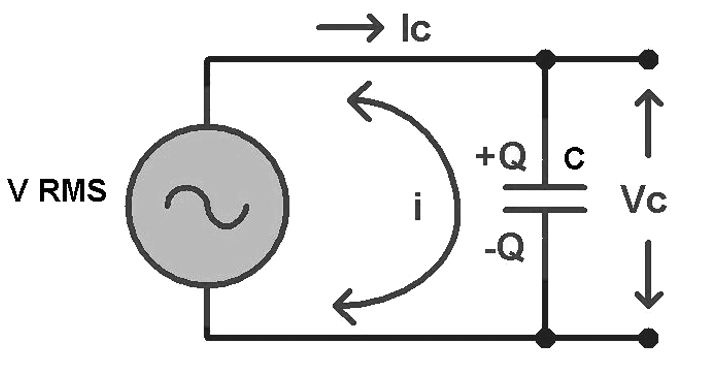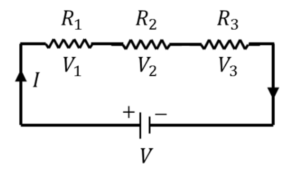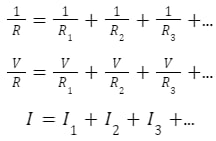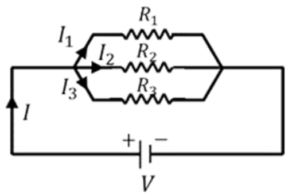Introduction
A conductor’s ability to resist the flow of electric current through it is known as resistance. Resistors are parts that are used to stop the flow of electrons. Due to the attraction between positive particles and negative electrons, the positive conductor particles obstruct the passage of electrons. The flow of electricity is resistant as a result of this obstruction. Ohms are the units used to measure resistance. There are two categories of electrical resistance: static resistance and dynamic resistance. The length of the conductor, cross-section area, temperature, material, etc. are the parameters that affect or depend on resistance.
Resistance of Conductor
Resistance is defined as a conductor’s ability to obstruct the passage of current. The conductor’s resistance is expressed mathematically as the relationship between the current flowing through it and the potential difference along its length. The movement of electrons across a conductor is known as electric current. Because of their attraction to one another, positive conductor particles obstruct the flow of electrons, which results in resistance to the movement of electricity. Resistance can be used to disperse voltage in a current as well as control the flow of electrons.
The resistivity of the conductor depends on
The ability of a material to resist electrical conduction is known as its resistivity. Resistivity is utilised to offset the effects of size on resistance. It is a non-size dependent material attribute. The resistivity of a conductor is influenced by elements such as temperature, alloying, cold work, age hardening, and mechanical stress. For most materials, resistance rises with temperature. Semiconductors are an exception, as their resistance increases with temperature.
Resistance also depends on the temperature of the conductor. As the temperature increases the resistivity increases.
\[R{\rm{_T}} = {\rm{ }}R{\rm{_0}}(1{\rm{ }} + \alpha \Delta T)\]
R = final resistance, \(R_0\) = initial resistance, and α = temperature coefficient
Check out our Science tuition to strengthen your Science concepts. Study Science Topic for classes 6th,7th, and 8th.
Resistance depends on temperature
The thermal energy of electrons rises with the temperature of metal conductors, which also raises the frequency of collisions between free electrons. As a result, they begin to move randomly, making it challenging to drift for conduction in a specific direction. The conductor’s resistance increases as a result. As a result, resistance rises as temperature rises for a metal conductor. Increasing current frequently results in temperature rise.
Conductor resistance formula
The resistance of a conductor is directly proportional to the length of the conductor (l). Thus, on doubling its length, resistance will be double, while on halving its length, resistance will be half. Also, the resistance of a conductor is inversely proportional to its cross-section area (A).
Since, \[R\propto L\]
And, \[R\propto \frac{1}{A}\]
Hence, \[R\propto \frac{L}{A}\]
Or, \[R = \rho \frac{L}{A}\]
Where R is resistance in ohm, L is length or conductor in meter, A is cross-section area in square meter and ρ is the resistivity constant in ohm per meter.
The bigger the value of resistance, the more it opposes the current flow. The value of resistance is given in Ω.
Temperature effect on resistance
A material’s resistivity changes with temperature. Resistance varies depending on the conductor, semiconductor, and insulator’s temperature. Resistance is influenced by temperature in two different ways: for metal conductors, it rises as the temperature rises, and for insulators, it falls as the temperature rises. At high temperatures, semiconductors have great conductivity.

Problem 1: What is the resistance of the circuit having length 10 cm and area 100 cm$^2$ having resistivity of 1.8 Ω.m?
Solution:
Length of circuit = 10 cm
Area of circuit = 100 cm$^2$
Resistivity = 1.8 Ω.m
The Formula used,
\(R = \rho \frac{L}{A}\)
\(\Rightarrow R = 1.8~\Omega.cm \frac{10~cm}{100~cm^2}\)
\(\Rightarrow R = 0.18~\Omega\)
Problem 2: What is the cell constant of the circuit when the conductivity is 20 Siemens/m having resistance 100 Ω?
Solution:
Resistance = 100 Ω
Conductivity = 20 Siemens/m
Cell constant =?
The Formula used,
\(R = \frac{Cell Constant}{Conductivity}\)
\(\Rightarrow Cell~Constant = Conductivity \times R\)
\(\Rightarrow Cell~Constant = 20~Siemens/m \times 100~Ω\)
\(Cell~Constant = 2000~m^{-1}\)
Frequently asked questions
1.What is the importance of resistance in electricity?
Ans: Resistance is a crucial component of electrical circuits; as resistance increases, current flow becomes more challenging, and as resistance decreases, current flow becomes easier. The resistance is a crucial component in conduction. Conduction greatly benefits from electron flow. The conductor turns into a semiconductor and an insulator as a result of an increase in resistance.
2. Do conductors have high or low resistance?
Ans: Insulators have a very high resistance to electrical current, compared to conductors’ extremely low resistance. Resistance turns become an insulator as it rises. Since there is no interruption to the high flow of electrons, the conductor’s resistance is very low. Conduction and resistance are inversely correlated.
3. Is it a light bulb resistor?
Ans: Despite not actually being resistors, light bulbs exhibit resistive behaviour. Electrons cannot pass through resistors, which also transform energy into another form. The process by which electricity passes through a light bulb to produce light and heat is the same. The light bulb’s filament serves as a resistor. The law of conservation of energy states that as energy cannot be created or destroyed, it can only be transformed from one form to another.







 Summary
Summary